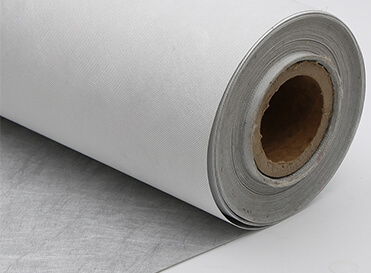RPET Spunbond Nonwoven Fabric
Here’s how RPET spunbond nonwoven fabric is typically produced:
- Collection: Recycled PET bottles and other PET waste are collected.
- Cleaning: The collected PET materials are cleaned to remove impurities.
- Shredding: The cleaned PET is shredded into small flakes.
- Melting: The PET flakes are melted down.
- Extrusion: The molten PET is extruded through spinnerets to form continuous filaments.
- Web Formation: The filaments are laid down randomly to form a nonwoven web.
- Bonding: The web is bonded together using heat, pressure, or adhesives to form a strong and cohesive fabric.
- Finishing: The fabric is treated and finished according to the specific requirements of its intended application.

key Characteristics
- Eco-Friendly: RPET fabric is made from recycled PET materials, reducing plastic waste and conserving resources. It is a sustainable alternative to virgin PET.
- High Strength: Similar to traditional PET spunbond fabric, RPET offers excellent tensile strength, making it durable and resistant to tearing and stretching.
- Dimensional Stability: The fabric maintains its shape and size under varying conditions, ensuring consistent performance.
- Chemical Resistance: RPET is resistant to many chemicals, including acids, alkalis, and organic solvents, suitable for various industrial applications.
- UV Resistance: The fabric has good resistance to ultraviolet (UV) light, making it ideal for outdoor applications.
- Thermal Stability: RPET can withstand high temperatures without significant degradation, beneficial for applications requiring heat resistance.
- Moisture Resistance: The hydrophobic nature of PET makes RPET resistant to moisture, suitable for applications where water resistance is required.
- Recyclability: RPET fabric can be recycled again, contributing to a circular economy and further reducing environmental impact.
Application

MEDICAL
Gowns, cowlings, shoecovers, face masks, hospital bed linens, single use garments

PACKAGING
Transportation (sickbags, envelopes, bags, promotional materials), Protection (sterilization, wrapping, electronic products, leather goods,cosmetics, bulk products), Others

Geotextile
For water conservancy projects (400gsm), port and terminal construction, airports, highways (200gsm), urban transportation, national defense projects, energy and mining projects (400gsm), landfills (400gsm)

INDUSTRY
Electrical insulation materials, industrial filter materials, PET skeleton cloth
